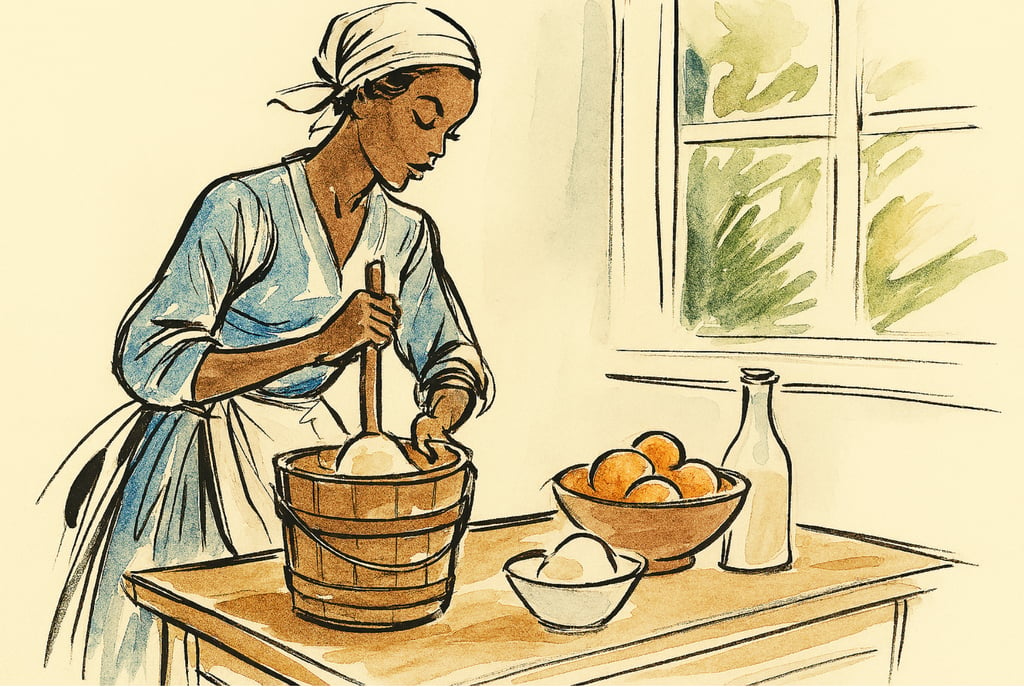How Enslaved Black Cooks Shaped American Ice Cream History
The untold story: learn how enslaved Black cooks shaped American ice cream history - crafting recipes and flavours that built this dessert’s lasting cultural legacy.
FOOD HISTORY & TRADITIONS


At Hida Dream Home, we love uncovering the layers of history behind the foods we enjoy today — those quiet stories where comfort and celebration were built by hands rarely acknowledged. Ice cream, that soft symbol of joy and summertime, carries such a story. Its roots in America are not just creamy and sweet but deeply tied to the lives and skills of enslaved Black cooks.
In the 18th and 19th centuries, ice cream was far from the everyday indulgence it is now. It was a luxury, reserved for the wealthy elite — the tables of governors, merchants, and even the early presidents. But it wasn’t those hosts who stirred the cream or shaved the ice. Behind the marble halls and manicured lawns, it was often enslaved men and women who mastered the craft of turning cream, sugar, fruit, and spice into something transcendent.
These cooks weren’t just following recipes handed to them. Many became innovators in their own right, experimenting with flavours, textures, and techniques that reflected a fusion of African, Caribbean, and European culinary traditions. They brought in local ingredients — peaches from Southern orchards, black walnuts, and even sorghum syrup — adding depth and character to what had been a relatively plain treat. The rich, layered flavours we now associate with American ice cream owe much to their creativity.
Yet their names, their skills, and their recipes were rarely credited. Cookbooks of the time often recorded “household” or “mistress” recipes that, in truth, came directly from the minds and hands of enslaved cooks. Ice cream became a fixture of American culinary culture thanks to their work, but the story was largely rewritten to erase their contributions.
One name we do know is James Hemings, Thomas Jefferson’s enslaved chef, trained in French culinary arts. Hemings is believed to have helped introduce and popularise European-style ice cream recipes in the United States, adapting them for American kitchens. Yet like so many others, his influence was long overshadowed by the fame of the households he served.
Fun fact: Jefferson himself recorded a vanilla ice cream recipe that historians believe came directly from Hemings’s work. That recipe — one of the earliest documented in the United States — would go on to influence countless versions that followed, all while Hemings’s role remained footnoted, if acknowledged at all.
The legacy of these cooks is more than culinary. It’s a reminder of how American food, even its sweetest parts, was built on the labour and innovation of those denied freedom, recognition, and profit. Every scoop of ice cream carries that complexity: a dessert that was once a symbol of privilege, made possible by those whose own lives were marked by deprivation.
Today, as ice cream feels like the most democratic of treats — served in street carts, parlours, and backyards everywhere — it’s worth pausing to honour its origins. By acknowledging the creativity of enslaved Black cooks, we not only correct the record but also deepen our appreciation for the dessert itself. Because behind every joyful spoonful is a story of resilience, skill, and quiet genius.
